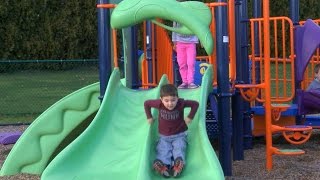Dr. Kathryn Castle explains how engaging children in thinking and talking about rules make them more likely to understand and follow rules, and learn self-regulation.
This interview appears in Guiding Young Children’s Behavior, which can be viewed at http://www1.easternct.edu/cece/
Copyright 2007 by the Center for Early Childhood Education at Eastern Connecticut State University.
This video may only be used for educational purposes.
Read Transcript
Thinking and talking about rules helps children think about why rules are necessary, and what would be good rules for all. It helps them to think about regulating their own behavior in relationship to the behavior of other children. Or what others call self-regulation. When children are engaged in thinking and talking about rules they’re actively involved in the democratic process. The emphasis is not on blind obedience, but on understanding why rules are important for all concerned. Children are more likely to understand the value of rules if they are involved in creating them. They’re more likely to follow rules they’ve had a part in creating because they understand they’re importance. They’re even more likely to remind the other children of the rules and to help enforce the rules. For the beginning of the program or year teachers can conduct group discussions of why rules are important and brainstorm with children what would be good classroom rules. Teachers can use good children’s literature, puppets and other props to read and dramatize helpful and hurtful behaviors. Teachers can then focus on helpful and hurtful behaviors, how they make you feel and what you should do when they happen. It’s important to write children’s ideas for rules as they state them and then review the list with the group. Discuss each rule and why each might be important. Now, once some classroom rules have been established and are written down and posted, then the rules can be referred to when problems occur. When rules get broken teachers can ask the child who has broken a rule to think about what they have done and what rule they have broken. Teachers can take the child by the hand to the posted rules and help the child find the rule in question, and then review why that rule is important. Teachers can the child about what they might do next time. It’s a long-term process that can’t be accomplished in just one group meeting. Rule discussions are ongoing throughout the duration of the early childhood program. But in the long-term children who are involved in such discussions will advance in their thinking about what it means to be a good citizen and what it means to be respectful towards others.






